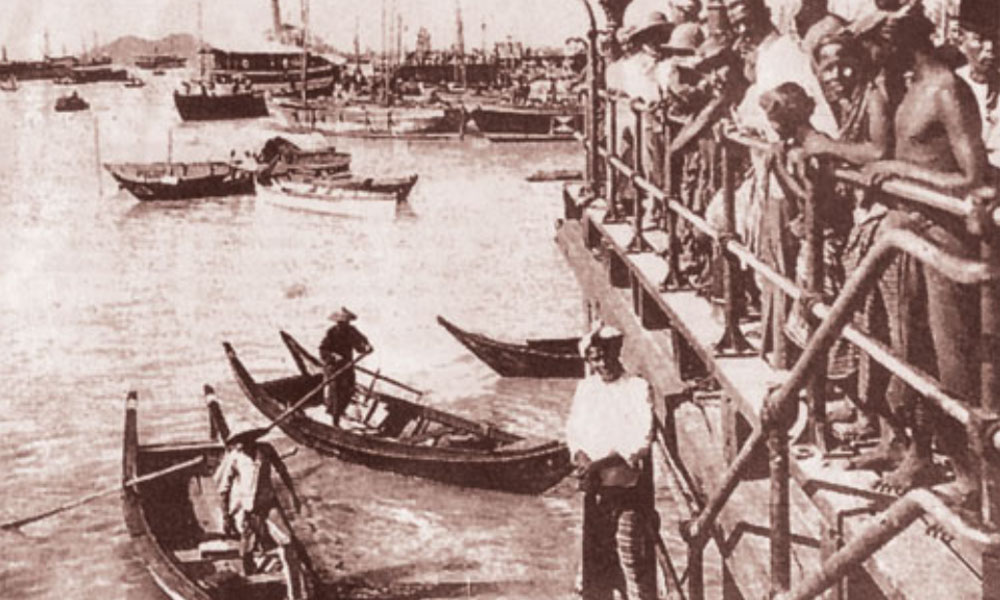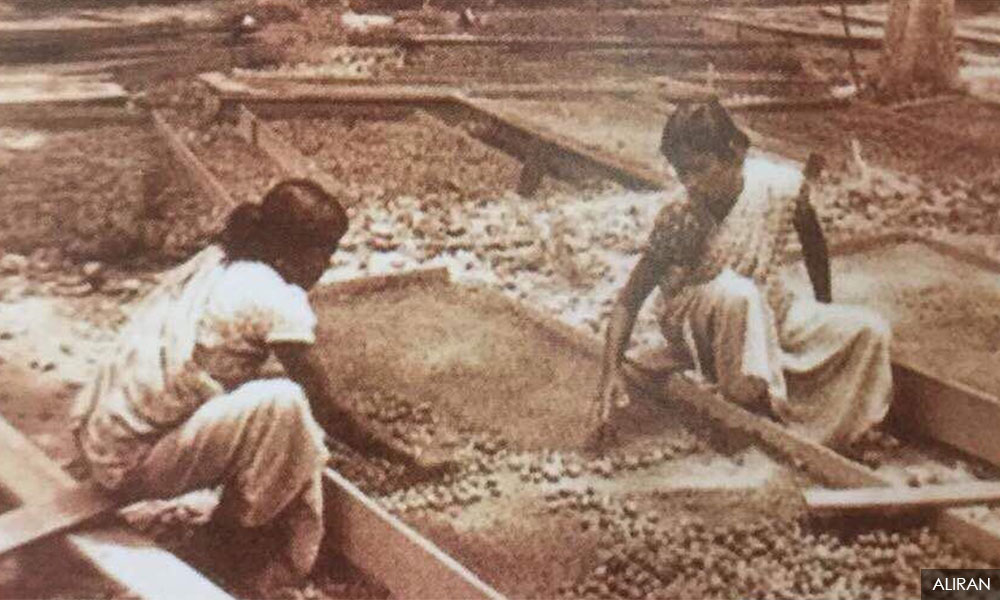HISTORY: TOLD AS IT IS | South Indians – Tamils, Telegus and Malayalees – who formed about 95 percent of the Indian population in British Malaya (excluding Singapore, now referred to as Peninsular Malaysia) have contributed immensely to the economic and infrastructure development of our nation.
They formed the bulk of the plantation labour force that greatly contributed to the development of Malaya’s rubber industry which became the main revenue earner for several decades beginning from 1916. Additionally, the South Indians also provided invaluable labour for the construction of roads, railways and government buildings.
Regrettably, the contributions of South Indians in the development of the nation’s rubber industry get only scant mention in our history textbooks – about two sentences in the Form 3 textbook. In this regard, one is reminded of NJ Colletta’s moving assertion that “the hands that so diligently tap[ped] thousands of [rubber] trees daily remain hidden from the public eye.”
Worse still, the school history textbooks forget to tell the important, poignant story whereby hundreds of thousands of South Indians lost their lives in helping to open up rugged and uninhabitable jungles for rubber cultivation and to develop the infrastructure of modern Malaya. The South Indians have virtually become “invisible people” and their toil and sacrifices have been largely forgotten.
Taking the cue from Pierre Le Moyne that “truth is the soul of history”, this article seeks to redress the intellectual travesty in our secondary history textbooks by highlighting the significant contributions of the South Indians in the development of our nation’s plantation agriculture and infrastructure. It begins by tracing the modern immigration of South Indians to Malaya since the 1780s.
Modern South Indian labour immigration into Malaya had commenced after the establishment of a British settlement in Penang by Francis Light in 1786. By the early 1790s, there were about 1,000 South Indian shopkeepers and coolies in Penang. Subsequently, in 1858, the number of South Indians in Penang increased to about 12,000.

From the 1840s onwards, Tamil labourers from the Madras Presidency (now Tamil Nadu) migrated to work in European-owned sugar, coconut and tapioca estates in Penang and Province Wellesley (Seberang Perai) under the indenture system based on a contract ranging between one and three years. They had to pay back all advances received and the cost of their passage. The number of South Indians (almost entirely Tamils) in Province Wellesley increased from 1,805 in 1844 to 3,514 in 1860.
Beginning from 1883, South Indian indentured labourers started arriving in the Federated Malay States (FMS) comprising Perak, Selangor, Negeri Sembilan and Pahang. The labourers could work on plantations or on projects, mainly construction of roads, railways and government buildings. They were recruited for periods of three to five years mainly in European-owned coffee estates, after which they could return to India or take up alternative employment.
Indentured labourers
Due to extremely deplorable and exploitative living and working conditions, along with the high mortality rates, the indentured labour system was abolished in 1910. According to Kernial Singh Sandhu, a leading authority on Indian immigration, about 250,000 South Indian indentured labourers came to Malaya between 1844 and 1910.
After 1905 with the rubber boom, South Indians swarmed into Malaya to work in European-owned rubber estates. In the eyes of the European planters, the South Indian labourers were most ideal for plantation work as they were seen as malleable, obedient, easily manageable, picked things up quickly, and worked well under supervision. Furthermore, South Indian labour was cheaper than the Chinese. Incidentally, the British colonial administrators encouraged South Indian immigration to counterbalance the rapidly increasing numbers and influence of the Chinese.
Apart from the Tamils who constituted the bulk of the arrivals, the other two main South Indian ethnic groups were the Telegus and Malayalees. The Telegus, who emigrated mainly from Andhra Pradesh, came to Malaya as indentured labourers to work in rubber and coconut plantations in Perak, Selangor, Kedah and Johor. In 1921, there were 39,986 Telugus in Malaya who were reputed to be hardworking and thrifty.
From 1910 onwards, a vast majority of South Indian labour was obtained through the kangani system which replaced the indentured labour system. A kangani – a foreman or overseer of an estate – was sent to India by his European employer to recruit labourers for the rubber estates, generally from his home village. As stated by Kernial Singh Sandhu, kangani-assisted migration accounted for 62.2 percent of total Indian labour migration during the period 1844-1938, with 13 percent of indentured labour migration. The kangani system of recruitment of South Indians was officially abolished in 1938.
The rubber boom of 1909-10 led to the rapid opening of land for rubber cultivation in the FMS. European rubber estate acreage increased from 168,000 in 1907 to 1,230,000 in 1922. Correspondingly, the South Indian population in Malaya, with the Tamils forming about 87 percent, increased from 444,685 in 1921 to 582,212 in 1931.

The importance of South Indian labour to the growth of the Malayan rubber industry is best captured by Colin Barlow, an academician: “A sufficient supply of labour to open up the new land was undoubtedly crucial to the vast expansion of rubber growing on estates.”
By 1916, rubber had overtaken tin as the main revenue earner of Malaya and remained so for several decades. In 1957, rubber constituted 59 percent of the total exports of Malaya. Indeed, as late as 1973, rubber contributed nearly 40 percent of Peninsular Malaysia’s total export revenue.
It is sometimes overlooked that the revenue obtained from rubber exports enabled the British administration to build roads, railways, schools and hospitals which further spurred the economic development of the nation. Furthermore, in the words of J Kennedy, a leading author of school history textbooks in the 1960s, “Directly and indirectly, rubber has contributed to the growth of towns, ports, and communications.”
750,000 may have died
The South Indians also provided invaluable labour for the construction of roads, railways, bridges, ports, airports and government buildings. Virtually every mile of railway track which totalled over 1,000 miles and about 6,000 miles of metalled main roads and several hundred miles of tertiary roads by 1957 were built almost entirely by Indian labour. As aptly stated by Muzaffar Tate, a local historian, “The Public Works Department was an Indian preserve.”
A little-known fact is that hundreds of thousands of Indians died in developing modern Malaya and opening up treacherous jungle tracts for rubber cultivation. According to the 1957 Federation of Malaya Census Report, much of the 1.2 million net Indian immigration to British Malaya between 1860 and 1957 “appears to have been wiped out by disease, snake bites, exhaustion and malnutrition.”
According to Kernial Singh Sandhu, it is estimated that more than 750,000 Indian immigrants may have died in Malaya during the period 1786-1957. This tragic historical fact is poignantly stated by Michael Stenson in his book, ‘Class, Race and Colonialism in West Malaysia: The Indian Case’: “South India provided an indispensable tribute of human lives without which the European-owned plantation industry in Malaya could not have been established.”

It is also worth mentioning that the English-educated South Indians, particularly the Malayalees who were well versed in English (along with Jaffna Tamils), found employment in subordinate positions of the government service: clerks, surveyors, dressers, teachers and technicians.
The number of Malayalees in Malaya, who originated from present-day Kerala state, increased from 17,190 in 1921 to 34,898 in 1931. As stated by Kernial Singh Sandhu, South Indians “proved to be invaluable in the clerical and technical services” of British Malaya’s administration which contributed towards nation-building.
To conclude, the South Indians have contributed enormously to the economic and infrastructure development of our nation. Their immense sacrifices and hard work certainly deserve much more than a few miserly sentences in our school history textbooks. Our younger generation needs to be told, as remarked by a former Indian labour leader, that “every railway sleeper and rubber tree in Malaya marks the remains of an Indian.” - Mkini
RANJIT SINGH MALHI is an independent historian who has written 19 books on Malaysian, Asian and world history. He is highly committed to writing an inclusive and truthful history of Malaysia based upon authoritative sources.
The views expressed here are those of the author/contributor and do not necessarily represent the views of MMKtT.



No comments:
Post a Comment
Note: Only a member of this blog may post a comment.